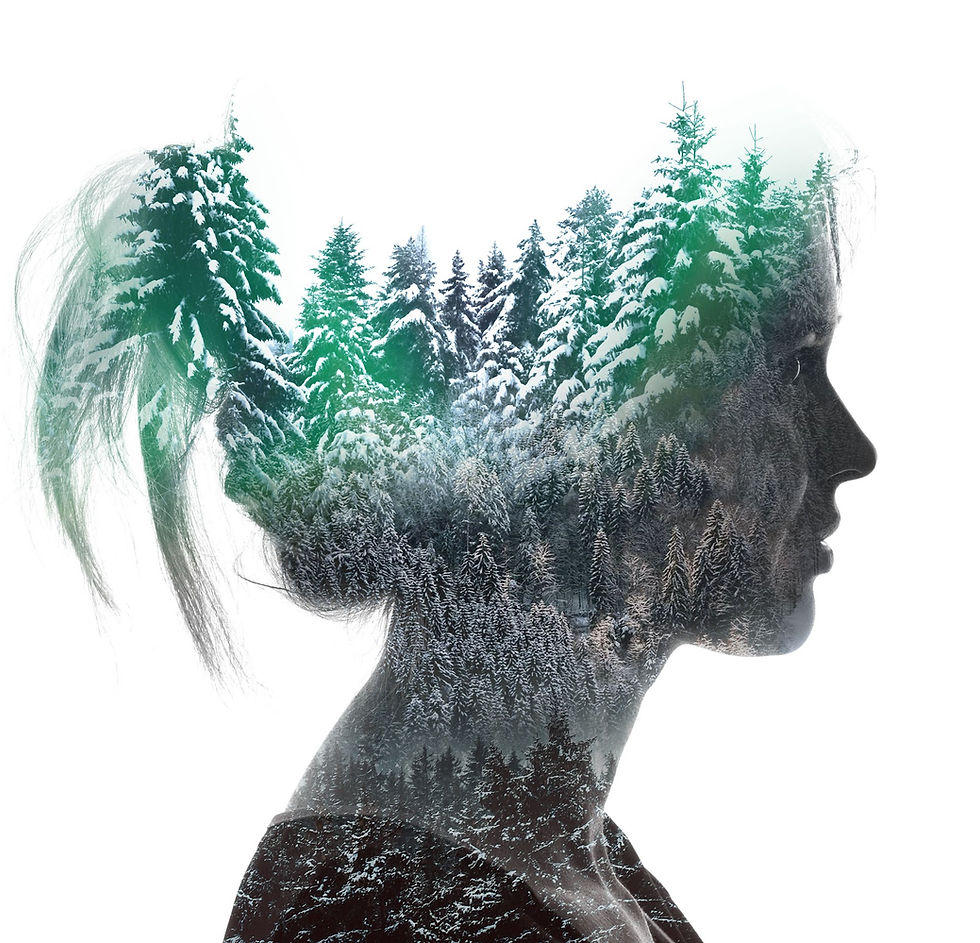Double Exposure: A Comprehensive Guide to the Art and Technique
- RayCee the Artist

- Apr 16, 2023
- 4 min read
Updated: Aug 15, 2023

Double exposure is an artistic and technical photographic technique that involves combining two or more images into a single frame. This technique has been used in photography and film for many years, both as an intentional creative choice and as a serendipitous accident. With the advent of digital photography and image editing software, double exposure has evolved into a versatile and accessible art form, enabling photographers and artists (such as myself, RayCee the Artist) to create surreal, dream-like, and thought-provoking images. In this article, I will discuss the history, methods, and creative applications of double exposure in detail.
History of Double Exposure
Double exposure has its roots in the early days of film photography. The first recorded example of a double exposure photo dates back to the 1860s when photographer Oscar Rejlander created a composite image by combining two different negatives. Throughout the 20th century, photographers such as Man Ray, Maurice Tabard, and Jerry Uelsmann continued to explore the potential of double exposure in their work, pushing the boundaries of photographic expression.
Techniques for Achieving Double Exposure

Film Photography
In-Camera Double Exposure
In film photography, double exposure can be achieved in-camera by exposing the same frame of film twice. This can be done by taking two shots without advancing the film, effectively layering the two images on a single frame. Some film cameras have a dedicated double exposure feature, while others require manual manipulation to achieve the effect.
Multiple Exposure in the Darkroom
Another method of achieving double exposure in film photography involves creating a composite image in the darkroom by printing two or more negatives onto a single sheet of photographic paper. This method allows for more control over the final result and the ability to combine images taken at different times or on different types of film.
Digital Photography
In-Camera Double Exposure
Many digital cameras now offer in-camera double exposure functionality, allowing users to combine multiple images on the camera's sensor. This method involves taking two or more photos and allowing the camera to merge them into a single image.
Post-Processing
Double exposure photos can also be achieved using image editing software such as Adobe Photoshop. This method provides the most control and flexibility in creating a double exposure effect, as it allows for precise adjustments to the opacity, blending modes, and positioning of the individual images.
Creative Applications of Double Exposure

Storytelling and Conceptual Imagery
Double exposure can be used to create powerful and evocative storytelling imagery, with the combination of images providing a metaphorical or symbolic narrative. For example, blending a portrait with a landscape can create a strong visual connection between a person and their environment, or merging two opposing images can represent a contrast or conflict.
Surrealism and Dreamscapes
Double exposure is often used to create surreal and dream-like images, with the overlapping of scenes or subjects resulting in a fantastical and otherworldly effect. This can be used to explore themes of memory, imagination, and the subconscious.
Visual Design and Aesthetic Experimentation
Double exposure can also be used as a purely visual and aesthetic tool, with the blending of colors, textures, and shapes resulting in unique and striking compositions. This can be particularly effective in abstract or minimalist photography.
Tips for Successful Double Exposure Photography

Plan Your Shots
Consider the overall concept and desired outcome before shooting. This will help you choose appropriate subjects and locations for your double exposure images.
Choose Complementary Images
Look for images with contrasting or complementary elements, such as light and dark, solid and textured, or organic and geometric.
Experiment with Exposure
When combining images, consider how the exposure of each shot will affect the final result. The goal is to create a properly exposed double exposure image.
Use a Tripod
For in-camera double exposures, using a tripod can help maintain consistent framing and alignment between shots. This is particularly important when combining images with similar subjects or scenes.
Utilize Image Editing Software
Experiment with various blending modes, opacity levels, and masking techniques in post-processing to achieve the desired double exposure effect. Software like Adobe Photoshop or Affinity Photo offer a wide range of tools for creating a double exposure final image.
Notable Double Exposure Artists and Photographers
The art of double exposure has been shaped and refined by various artists and photographers throughout history. Oscar Rejlander, known as the "father of art photography," pioneered the technique in the 1860s, while a leading figure in the Dada and Surrealist movements, Man Ray, explored double exposure through his experimental "rayographs" and portraits.
Maurice Tabard, another prominent surrealist photographer, utilized double exposure to create dream-like and ethereal images that blurred the lines between reality and fantasy. Jerry Uelsmann, celebrated for his intricate and surreal photomontages, seamlessly combined multiple negatives in the darkroom to create mesmerizing double exposure images.
Also, contemporary photographer Christoffer Relander has made a significant impact with his striking double exposure images that skillfully blend human portraits with natural landscapes.
Conclusion
Double exposure is a versatile and creative photographic technique that has evolved from its early beginnings in film photography to its current widespread use in digital photography and image editing software. By combining two or more images into a single frame (composite image), artists and photographers can create powerful storytelling, surreal dreamscapes, and visually striking compositions. By understanding the various methods and techniques for achieving double exposure, and by drawing inspiration from notable artists and photographers, anyone can experiment with this captivating art form and create their own unique double exposure images.







